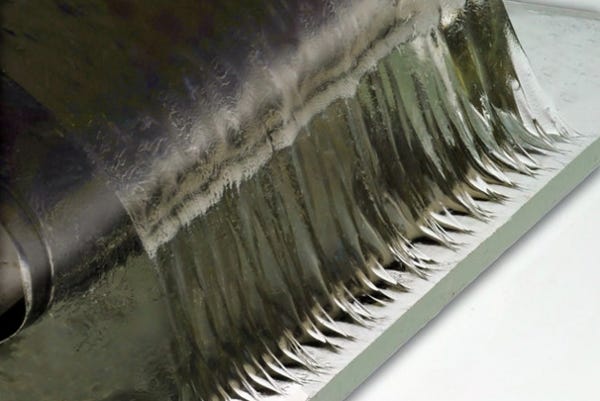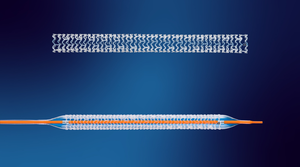The Amazing Water Adhesive Developed at MIT
December 4, 2015
The synthetic, sticky, biocompatible hydrogel is mostly water, and can help suspend a 55-lb weight.
Qmed Staff
|
Engineered hydrogel being pulled away from a glass surface. (Image courtesy of Felice Frankel and MIT) |
MIT researchers recently announced strides when it comes to synthetically recreating the natural hydrogels that allow mussels and barnacles to tightly glue themselves to ship hulls, or for our own tendons and cartilage to stick to bones.
The synthetic, sticky hydrogel developed at MIT is 90% water and can bond with glass, silicon, ceramics, aluminum, and titanium, according to an MIT news release. It is tough enough that the researchers were able to suspend a 55-lb weight from two plates of glass with but a small square of hydrogel applied in between the plates.
And while the researchers' initial focus in on using the gel in soft robotics, the hydrogel's biocompatibility has them also interested in health-related applications, such as biomedical coatings for catheters and sensors implanted in the body. The researchers also found they could use the hydrogel as an electronic conductor, which suggests potential bioelectronic uses.
"You can imagine new applications with this very robust, adhesive, yet soft material," said MIT mechanical engineering professor Xuanhe Zhao.
"It's a pretty tough and adhesive gel that's mostly water," said Hyunwoo Yuk, a graduate student in mechanical engineering and the lead author of a Nature Materials paper on the work. "Basically, it's tough, bonding water."
The MIT team is not the first to explore this area. For example, a Clemson University (Clemson, SC) team announced in mid-2014 that they were working to develop a natural adhesive inspired by barnacles and their ability to cling to objects submerged in the water.
In the case of the MIT research, the key to creating the hydrogel was to harness two characteristics: energy dissipation and chemical anchorage.
"Chemical anchorage plus bulk dissipation leads to tough bonding," Zhao said. "Tendons and cartilage harness these, so we're really learning this principle from nature."
Yuk's hydrogel recipe involved mixing a solution of water with a "dissipative ingredient" to create a stretchy, rubbery material. Depending on the surface it was being applied to (i.e. aluminum or glass or titanium), specific functional silanes were used to create chemical links between each surface and its hydrogel.
A standard peeling test demonstrated that the hydrogel's bond was as strong as 1000 J/sq m, a similar level to the stickiness of a tendon or cartilage to bone.
"We basically broke a world record in bonding toughness of hydrogels, and it was inspired by nature," Yuk said.
Learn more about cutting-edge medical devices at MD&M West, February 9-11 at the Anaheim Convention Center in Anaheim, CA. |
Chris Newmarker is senior editor of Qmed and MPMN. Follow him on Twitter at @newmarker.
Like what you're reading? Subscribe to our daily e-newsletter.
About the Author(s)
You May Also Like



